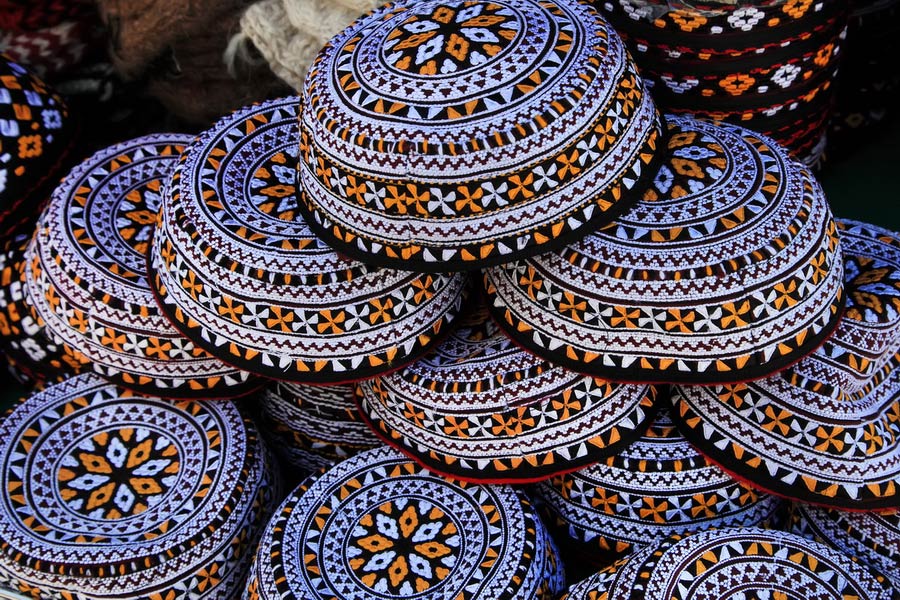
Turkmen skullcap is called takhya . It not only just a headdress but also a symbol of the national Turkmen costume which even today preserves original traditional motives. The ornament of takhya had a magic meaning . Long time ago p eople believed that takhya could protect the owner from troubles , jinxes , illnesses and harm. According to ancient customs even a n old takhya couldn't be given to another person or thrown out .
Beyond its magic properties takhya ensured an owner's head protection against the scorching sun. Takhyas can be round , oval, low and high. The y have been made from various fabrics both expensive - velvet , silk - and simple - sateen and printed cotton . More often a beautiful expensive fabric called «keteni" was used and embroidered with patterns.
Soft quilted takhya made from linen fabric was put on a boy 's or a girl's head few days after birth. O ld men used to wear caps sewed from white coarse calico. Men wore their takhyas on shaved head s .
G irls and young brides wore soft, embroidered with color silk threads takhyas with silver pendants. Takhya emphasized the blossoming beauty of a girl, and the embroidered flowers symbolized beauty and virginity. Not wearing takhya was regarded as a loss of chastity.
Man's takhya has always distinguished from female one by simplicity and restraint of patterns. However , it had its special meaning ciphered in an ornament from triangles. They symbolize d the unity of Turkmen Dzhigits ready to fight off the enemy standing shoulder to shoulder.
Today ancient takhya experiences its rebirth. It is worn by both adults and children with traditional and modern outfits. A c olourful takhya gives clothes true national flavor serving as an example of exquisite art of embroidery.
Turkmen carefully preserve their traditions. Takhya p atterns have remained the same as they were many centuries ago due to the fact that the skilled crafts women have managed to perfect the decor and the ornament s have become canonical. Skillfully embroidered takhyas might as well be considered unique pieces of art .

